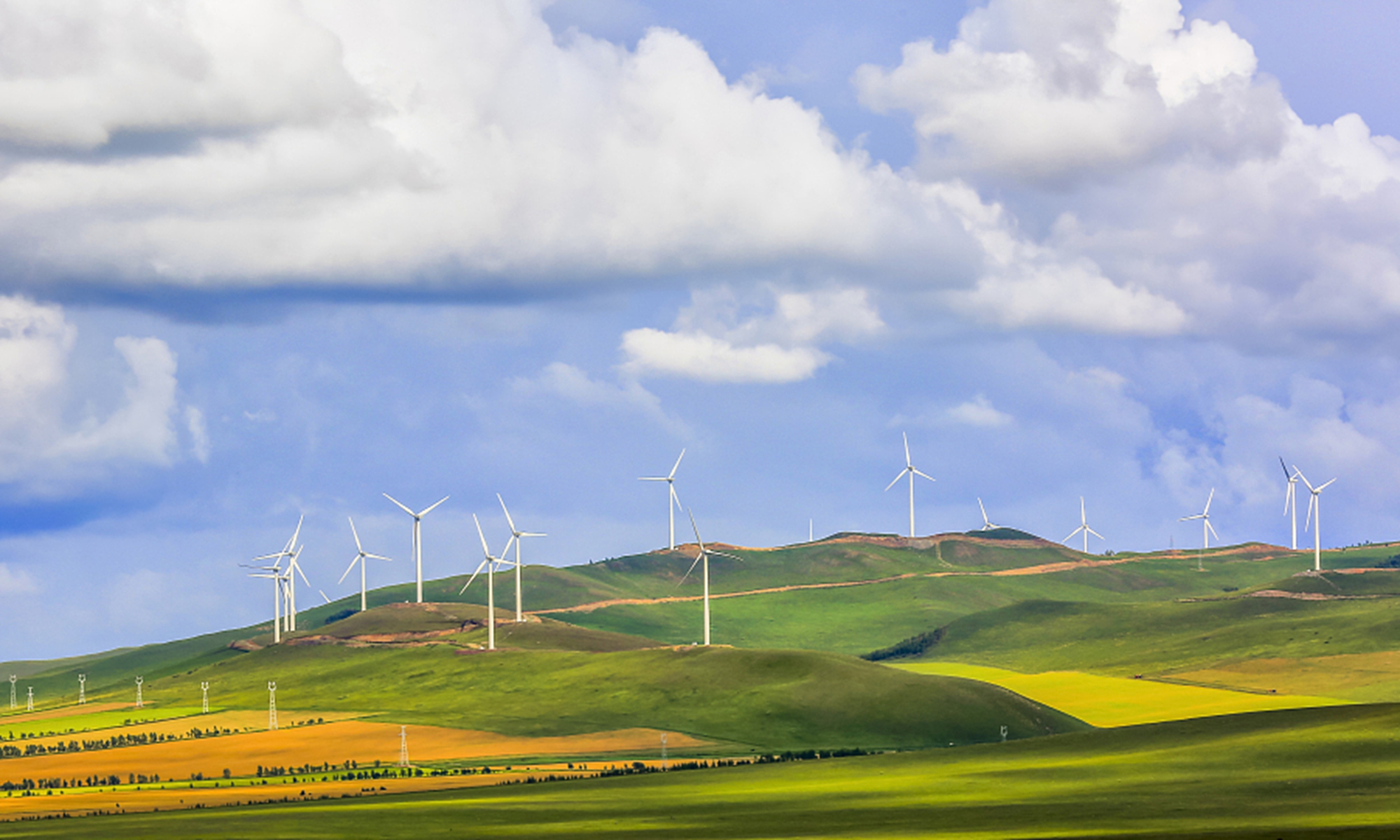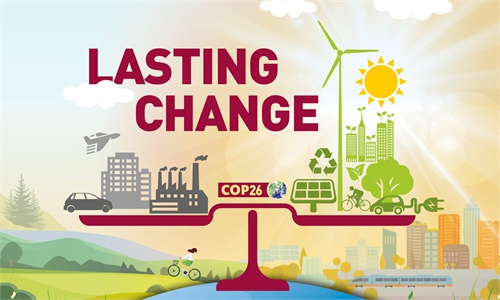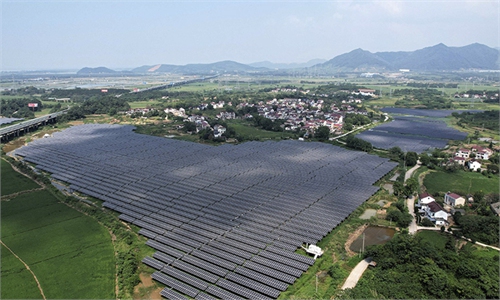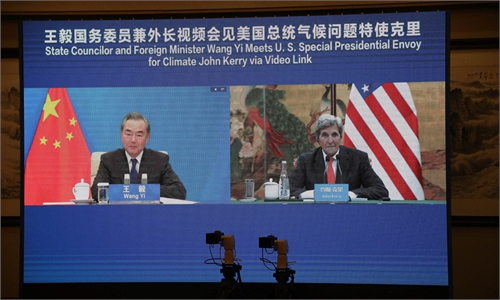COMMENTS / COLUMNISTS
China gains competitive advantages in greener development

Climate Photo: VCG
The US and China, the world's top two emitters of carbon dioxide, unveiled a deal on November 10 at the ongoing Glasgow climate summit aimed at strengthening cooperation in the decade, tackling global climate change in tandem, including cutting the poisonous methane emissions, protecting forests and using less coal.
The agreement was announced by US climate envoy John Kerry and his Chinese counterpart Xie Zhenhua, Reuters reported. The deal is commendable. It means the intense level of the dialogue between Beijing and Washington on climate cooperation begins to translate into tangible results, despite their strained political ties.
The agreement was hailed by the UN Secretary General Antonio Guterres as a great achievement. At the opening of the Glasgow COP26 meeting, Guterres pleaded for a genuine effort from of all countries to address their addiction to fossil fuel, warning the planet faces a stark choice -- either stop using carbon-based fossil fuels, or face catastrophic results. After witnessing the ups and downs of climate negotiations over the past years, the deal between China and the US is worth cherishing.
Without an immediate and rapid effort to reduce greenhouse gas emissions, the goal of limiting global warming to 1.5 degrees or 2 degrees Celsius above pre-industrial levels at the end of this century would be beyond reach, according to scientists. The Glasgow summit aims to secure net zero carbon emissions pledges and keep the Paris Agreement target of the 1.5-2.0 degrees temperature rise so that Earth will stay safe.
China's central government has made two signature commitments on climate, pledging that the country's emission of carbon dioxide will peak before 2030, and the country will achieve carbon neutrality before 2060, when the amount of carbon emissions into the atmosphere will be offset by increased forest coverage and other technological breakthroughs.
As the world intensifies its focus on addressing climate change, the speed of major economies in developing eco-friendly clean energies and high-tech industrial products, like solar panels and electric vehicles, will be closely watched. China leads the world in both. In addition, the nation leads in the number of other clean technology areas including hydropower generation, nuclear power, wind turbines and tidal power facilities.
One of the notable achievements of China is contributing to global climate efforts is Beijing's strenuous effort to phase out traditional petrol vehicles and particularly gas guzzlers on the nation's roads. Owing to Chinese central government's preferential policies, the country's electric vehicles sale volume is expected to exceed heart-breaking 2.3 million in 2021 -- making China the single largest EV market in the world.
A number of Chinese automakers have begun to send internal combustion engines to the scrap heap and are pouring billions of yuan to electric motors and batteries. Driven by the favorable taxation settings and fee policy meted out by Beijing, droves of Chinese in urban areas are being increasingly persuaded to switch to electric cars in the country's megacities such as Beijing and Shanghai.
In Shenzhen, all taxi cabs and public buses are now battery-powered, with other cities like Hangzhou, Suzhou and Chengdu are catching up rapidly. With carbon emissions drastically reduced in many cities, millions of Chinese families are enjoying tangible environmental benefits. In Beijing, the number of blue sky and sunshine days has increased 34 per cent over five years ago, statistics showed
And, the country's central bank, the People's Bank of China, has just worked out a brand-new lending tool to offer the lenders with low-cost loans to help businesses cut carbon emissions. The central bank will provide a generous package of 60 percent of loan principals made by financial institutions for carbon cuts, with a one year lending rate at merely 1.75 percent, and the loans can be rolled over twice.
This new lending policy tool by the central bank is likely to produce very positive impact by inspiring Chinese enterprises to use innovative green technologies and cut emissions, while reaping more profits through access to low-cost loans, analysts say.
In another push to restrict carbon emissions, China launched a landmark emissions trading market in July 2021, which will prove to be a powerful tool in its attempts to drive down climate change-causing greenhouse gases and be carbon-neutral by 2060. Considering the transaction volume, the market is now the world's largest carbon trading market.
China's government is earnest in reducing carbon footprint. The country's industrial manufacturing capability sets the foundation for it to undergo a major energy structure reform, trending towards cleaner and easily recyclable energy variants. For an example, the country's 40,000-km high-speed rail system that crisscrosses all provinces, its cities and outlying villages is amongst the world's cleanest train systems.
In comparison, the US did little during the past four years of former US president Donald Trump's rule, which included several officials who labeled climate change a conspiracy theory, despite the fact that severe weather causes an estimated $100 billion in economic damage to the US each year. Trump was more interested in fighting trade wars than cutting carbon emissions to alleviate the world's climate crisis.
Also, President Joe Biden's new energy spending agenda is fiercely contested and has been obstructed by the Republicans in the US Congress.
High-speed trains, high-speed ubiquitous 4G and 5G wireless connections, and high-speed development of clean energy and renewables manufacturing are now catapulting China's economy to new heights. The country is, increasingly, gaining a competitive advantage in promoting greener innovations and high-quality economic growth.
The author is an editor with the Global Times. bizopinion@globaltimes.com.cn



